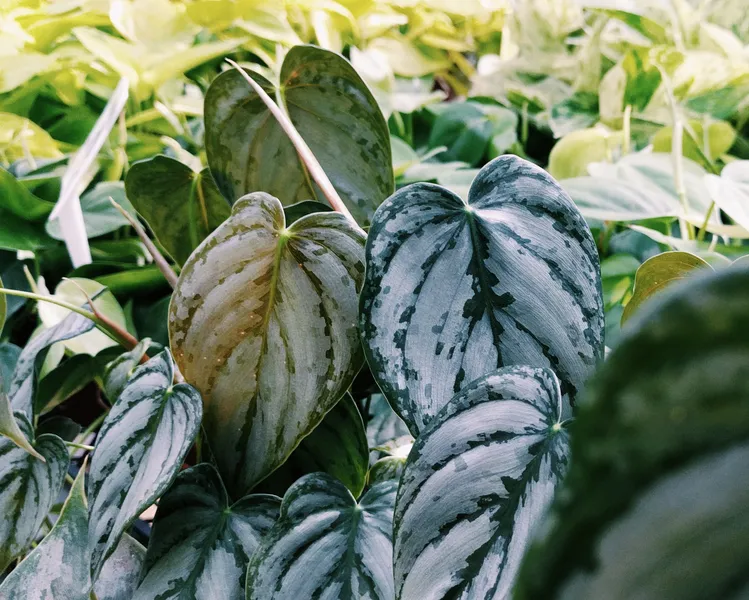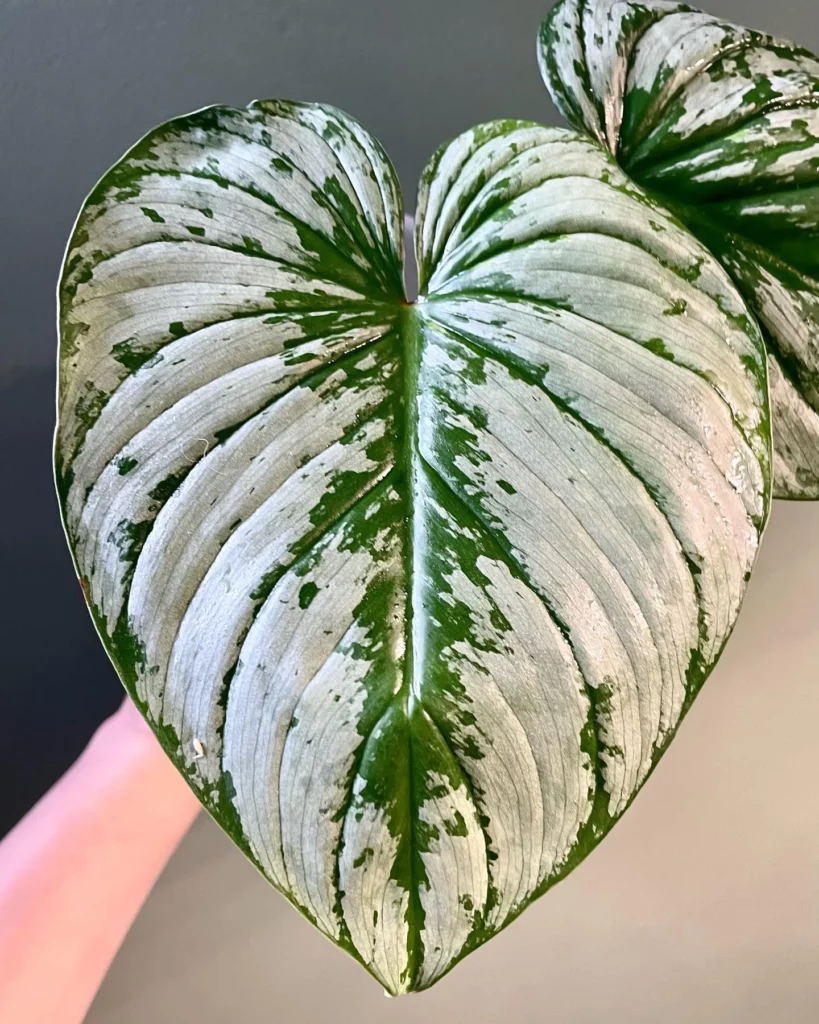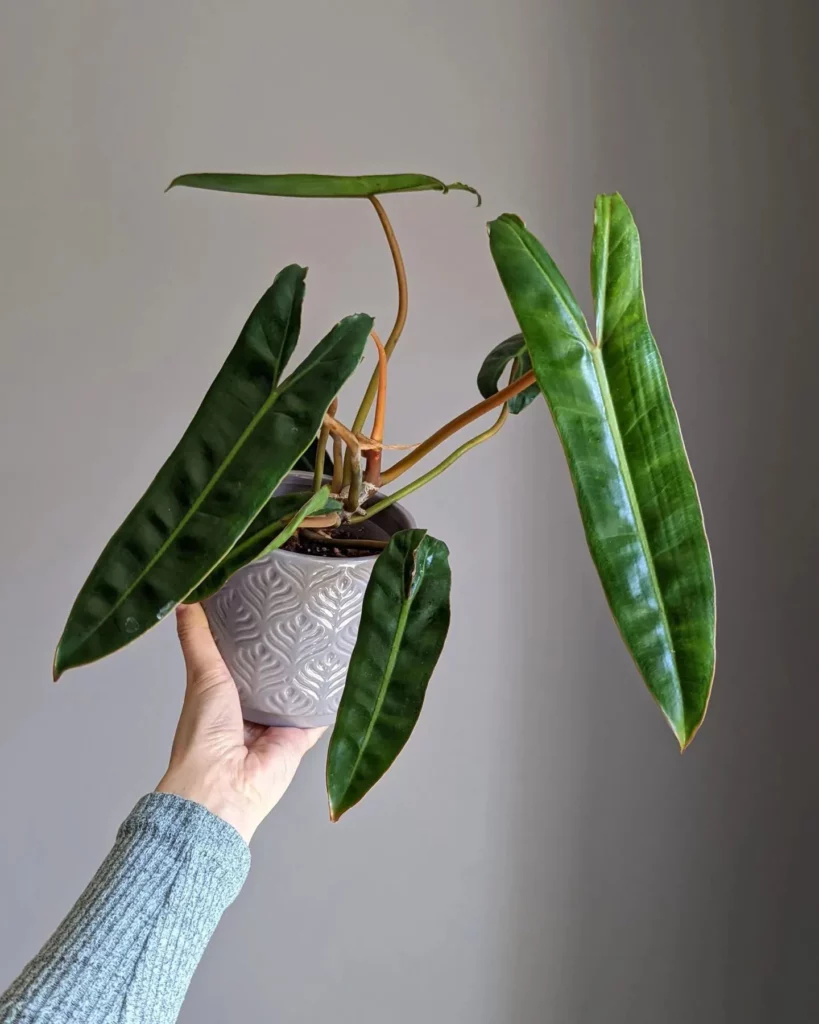Welcome to my easy care guide for growing Philodendron Brandtianum, also known as the Silver Leaf Philodendron, in your own home garden. This versatile and popular houseplant is a great addition to any interior design, with its unique silver and green mottled foliage.
Key Takeaways:
- Philodendron Brandtianum thrives in bright indirect light and should be placed in a location with ample sunlight.
- Proper watering is essential for Philodendron Brandtianum, allowing the top 2-3 inches of soil to dry out before watering again.
- Fertilize Philodendron Brandtianum regularly during the growing season with a balanced houseplant fertilizer.
Appearance of Philodendron Brandtianum



The Philodendron Brandtianum, also known as the Silver Leaf Philodendron, is a stunning houseplant with unique characteristics. Its heart-shaped leaves are a standout feature, showcasing a beautiful mottled pattern of silver and green. The foliage of the Philodendron Brandtianum can vary in appearance, ranging from shades of orange to blends of olive green and silver.
The average leaf size of the Philodendron Brandtianum is 4-7 inches, and when fully matured, the plant can reach lengths of up to 12 inches. With its vibrant colors and attractive shape, it adds a touch of elegance and natural beauty to any indoor space.
Mottled Foliage
- The Philodendron Brandtianum features heart-shaped leaves with a mottled pattern of silver and green.
- The foliage can vary in appearance, ranging from shades of orange to blends of olive green and silver.
- The average leaf size is 4-7 inches, with the plant reaching lengths of up to 12 inches when mature.
Heart-Shaped Leaves
- The leaves of the Philodendron Brandtianum are broad and heart-shaped, adding to its visual appeal.
- The shape of the leaves makes the plant instantly recognizable and distinctive.
- These heart-shaped leaves contribute to the overall charm and beauty of the Philodendron Brandtianum.
No products found.
Light Requirements for Philodendron Brandtianum



When it comes to the light requirements for Philodendron Brandtianum, bright indirect light is the key. This means placing the plant in a location where it can receive plenty of sunlight without direct exposure. Too much intense sunlight can actually harm the leaves and make the plant more susceptible to pests and diseases. If you notice the leaves starting to yellow, it may be a sign that the plant needs more light.
Optimal Light Conditions
- Philodendron Brandtianum thrives in bright indirect light.
- Place the plant near a south or west-facing window where it can receive filtered sunlight.
- Outdoors, it’s best to grow Philodendron Brandtianum in dappled shade under trees.
Watering Philodendron Brandtianum
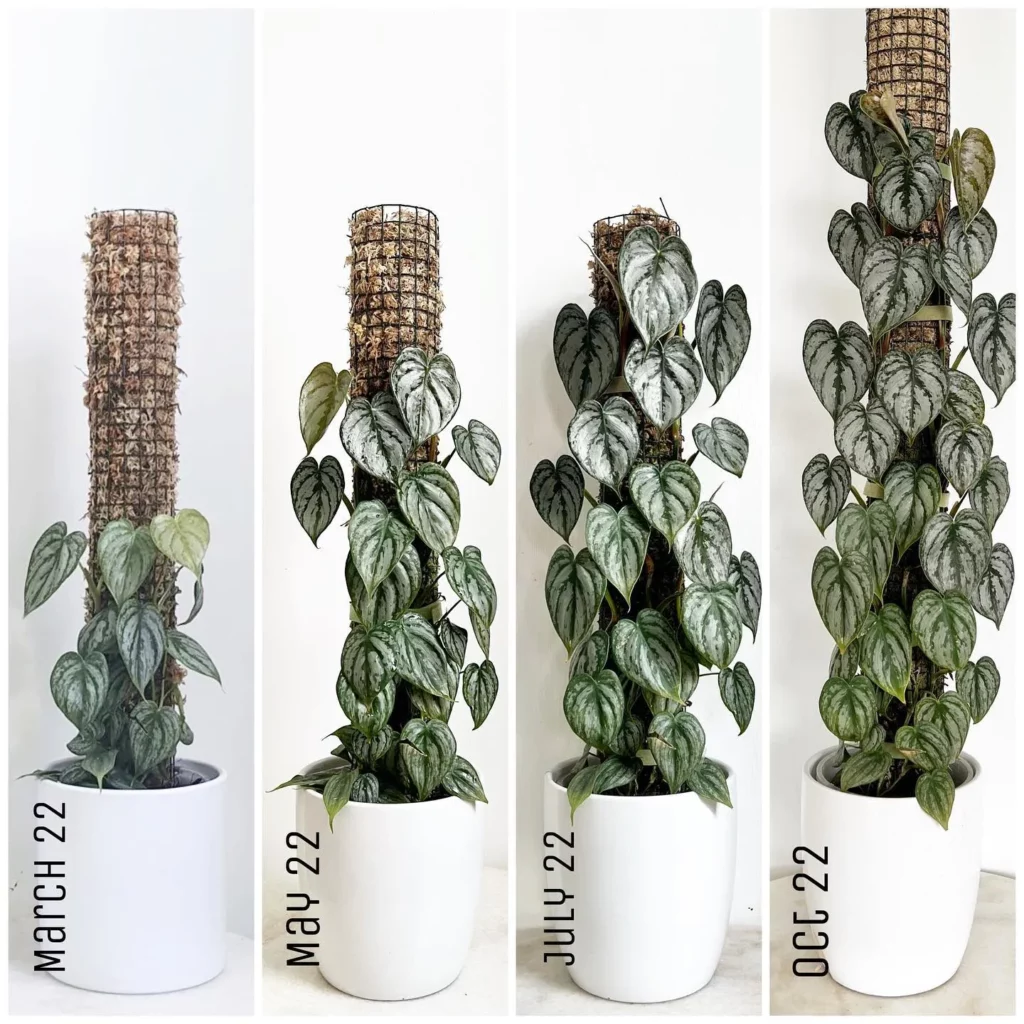


Proper watering is crucial for the healthy growth of your Philodendron Brandtianum. To ensure optimal moisture levels, it’s important to use well-draining soil that allows excess water to escape. A mixture of two parts potting soil, one part perlite, and one part coconut coir works well to improve drainage.
When watering your Philodendron Brandtianum, it’s essential to wait for the top 2-3 inches of soil to dry out before watering again. Overwatering can lead to root rot and other problems, so it’s important to avoid waterlogging the plant. Water deeply, allowing the water to fully drain out of the bottom of the container.
Watering Frequency:
- In the heat of summer, water your Philodendron Brandtianum about 2-3 times a week.
- In the winter months, reduce watering to about once a week.
Fertilizing Philodendron Brandtianum

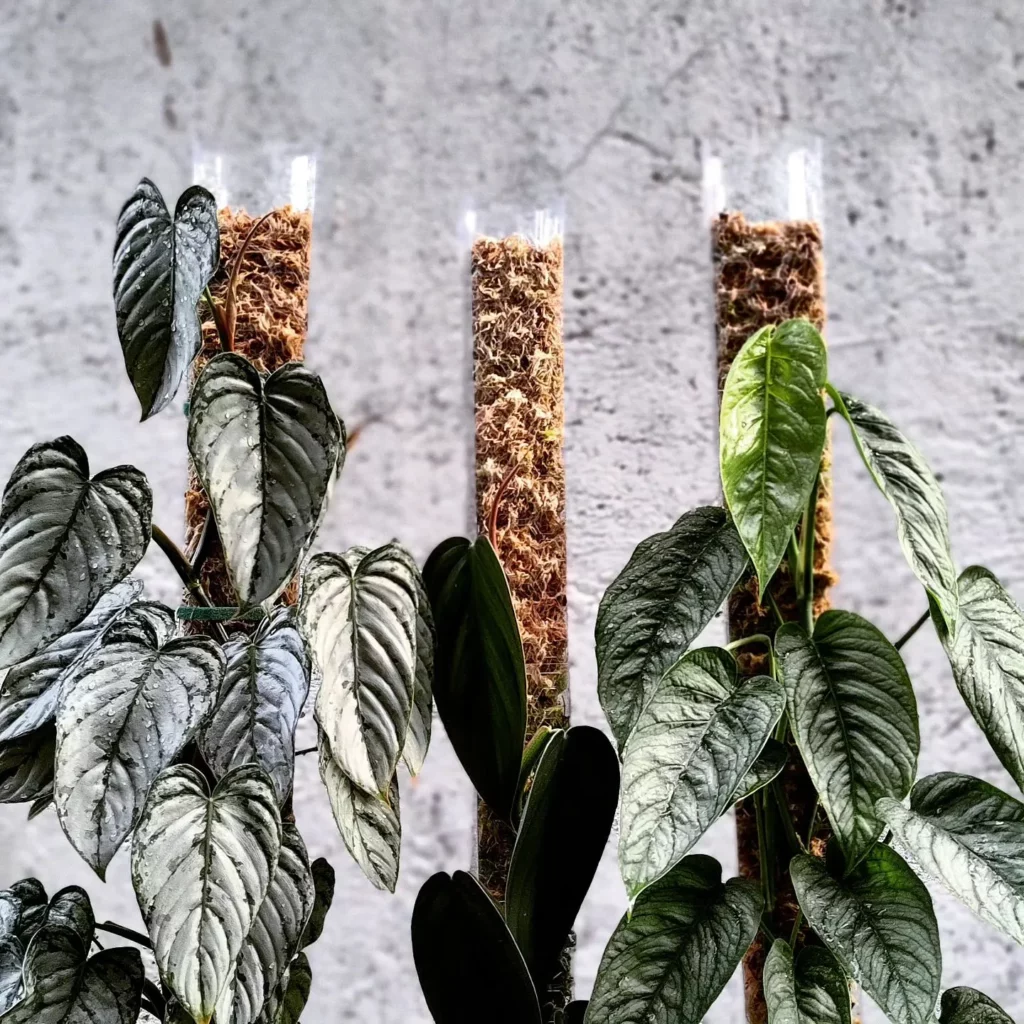

To ensure the growth potential of your Philodendron Brandtianum is fully realized, proper fertilization is key. Using a balanced houseplant fertilizer can provide the necessary nutrients to support healthy foliage and vibrant growth. I recommend fertilizing your Philodendron Brandtianum once or twice a month during the growing season, which typically spans from late spring to early fall.
When choosing a fertilizer, look for one that is specifically formulated for houseplants and has a balanced ratio of nutrients, such as 10-10-10 or 20-20-20. This ensures that your plant is receiving a mix of nitrogen, phosphorus, and potassium – essential elements for its overall health and development. Follow the instructions on the fertilizer packaging to determine the correct amount to use for your Philodendron Brandtianum.
In late fall and winter, when your plant is not actively growing, reduce the frequency of fertilization to every six to eight weeks. This allows your Philodendron Brandtianum to enter a dormant period and conserve energy. During this time, it’s important to adjust your fertilization schedule to match the plant’s natural cycle.
Benefits of Proper Fertilization
- Enhances growth potential: By providing the necessary nutrients, fertilization supports robust growth in your Philodendron Brandtianum. The balanced ratio of nutrients helps strengthen the overall structure of the plant.
- Promotes healthy foliage: Fertilization contributes to the development of lush and vibrant foliage in your Philodendron Brandtianum. The right balance of nutrients helps ensure that leaves are large, glossy, and exhibit their characteristic mottled pattern.
- Prevents nutrient deficiencies: Regular fertilization helps prevent nutrient deficiencies in your Philodendron Brandtianum, which can manifest as discolored or stunted growth. Providing a consistent supply of nutrients ensures that your plant has access to everything it needs for optimal health.
Potting Philodendron Brandtianum



When it comes to potting Philodendron Brandtianum, choosing the right type of soil and container is essential for its growth and overall health. Here are some guidelines to follow:
- Use well-draining soil: Philodendron Brandtianum prefers soil that drains well. You can achieve this by using a mixture of two parts potting soil, one part perlite, and one part coconut coir. This combination improves drainage and allows air to reach the roots.
- Ensure proper moisture levels: It’s important to maintain the right moisture levels in the soil. Overwatering can lead to root rot, while underwatering can cause the plant to wilt. Wait for the top 2-3 inches of soil to dry out before watering again.
- Choose a container with drainage holes: The pot you choose should have drainage holes in the bottom to allow excess water to escape. This prevents waterlogging and ensures that the roots don’t sit in standing water.
Propagation of Philodendron Brandtianum



Propagating Philodendron Brandtianum is a simple and rewarding process that allows you to expand your plant collection or share with fellow gardening enthusiasts. There are two primary methods of propagation: stem cuttings and division.
Stem Cuttings
- Select a healthy stem from the parent plant, around 6 inches in length.
- Using clean pruning shears, make a clean cut just below a node (where leaves attach to the stem).
- Remove the lower leaves, leaving only a few at the top to allow for photosynthesis.
- Place the cutting in a glass of water, ensuring that at least one node is submerged.
- Change the water every few days to prevent the growth of bacteria or mold.
- After a few weeks, roots will begin to develop. Once the roots are at least an inch long, you can transfer the cutting to a pot with well-draining soil.
- Water the newly potted cutting and place it in a location with bright, indirect light.
Division
Another method of propagating Philodendron Brandtianum is through division. This method is best suited for mature plants with multiple stems or clumps. Here’s how to do it:
- Remove the plant from its pot and gently separate the clumps or stems.
- Use clean pruning shears to make clean cuts, ensuring that each division has roots attached.
- Pot each divided section in a container with well-draining soil.
- Water the newly potted divisions and place them in a location with bright, indirect light.
Growth and Development of Philodendron Brandtianum



Growing Philodendron Brandtianum can be a rewarding experience, especially when you see the plant thrive and develop in your own home garden. This beautiful houseplant, native to tropical climates, adapts well to indoor growth, making it a popular choice for plant enthusiasts across the United States.
Indoor Growth
When cultivated indoors, Philodendron Brandtianum can reach a height of 4-5 feet, creating an impressive tropical display in your living space. The plant’s lush foliage, with its distinct silver and green mottled pattern, adds an element of natural beauty to any interior design. With proper care and maintenance, these plants can even grow bigger in ideal conditions.
Tropical Climates
In its natural habitat, Philodendron Brandtianum thrives in warm, humid climates. However, even if you don’t live in USDA Zones 9-11, you can still enjoy the growth and development of this stunning plant by creating a tropical environment indoors. Providing the right amount of warmth, humidity, and proper care will contribute to its healthy growth.
Care and Maintenance
- Place your Philodendron Brandtianum in a location that receives bright indirect light, such as a south or west-facing window with filtered sunlight. This will mimic the conditions of its natural habitat.
- Water the plant thoroughly, allowing the top 2-3 inches of soil to dry out before watering again. Avoid overwatering to prevent root rot.
- Fertilize the plant once or twice a month during the growing season using a balanced houseplant fertilizer. This will provide the necessary nutrients for optimal growth.
- Ensure that the potting soil is well-draining to prevent waterlogging. You can use a mixture of potting soil, perlite, and coconut coir to improve drainage and moisture retention.
- Regularly inspect the plant for any signs of pests or diseases, such as mealybugs, spider mites, or leaf spot. Take appropriate measures to control and eliminate them if necessary.
Pests and Diseases of Philodendron Brandtianum



As a Philodendron Brandtianum enthusiast, I know that keeping your plants healthy and pest-free is essential for their thriving growth. However, it’s important to be aware of the potential pests and diseases that can affect your beloved Philodendron Brandtianum.
Pests:
Two common pests that can infest Philodendron Brandtianum are mealybugs and spider mites. Mealybugs are small, white, cotton-like insects that can gather on the undersides of leaves and in leaf axils. Spider mites, on the other hand, are tiny bugs that spin fine webs and suck the sap from the plant, causing leaves to turn yellow and drop.
To prevent and control these pests, regular inspections are key. If you notice any signs of infestation, such as yellowing leaves or webbing, it’s important to take action. You can use organic insecticides or try natural methods like washing the leaves with soapy water to eliminate the bugs and protect your beautiful Philodendron Brandtianum from further damage.
Diseases:
Leaf spot is a common disease that can affect Philodendron Brandtianum. It is characterized by dark, water-soaked spots on the leaves, which can eventually turn into yellow or brown lesions. This disease is usually caused by overwatering, poor air circulation, or high humidity. To prevent leaf spot, it’s important to avoid overwatering and ensure proper ventilation around your plants.
Regular care, proper watering, and a healthy growing environment are crucial for preventing and mitigating the occurrence of pests and diseases in your Philodendron Brandtianum. By staying vigilant and taking proactive measures, you can keep your plants thriving and enjoy their lush foliage for years to come.
FAQ
How often should I water my Philodendron Brandtianum?
Wait for the top 2-3 inches of soil to dry out before watering again. In the summer, water 2-3 times a week, and in winter, reduce watering to once a week. Avoid overwatering.
What kind of light does Philodendron Brandtianum need?
Philodendron Brandtianum thrives in bright indirect light. Place it in a location with ample sunlight without direct exposure. A south or west-facing window with filtered sunlight is ideal.
How do I fertilize my Philodendron Brandtianum?
Use a balanced houseplant fertilizer once or twice a month from late spring to early fall. Reduce feeding to every six to eight weeks in fall and winter. Follow the product instructions for proper usage.
What kind of soil should I use when potting my Philodendron Brandtianum?
Philodendron Brandtianum requires well-draining potting soil. You can add perlite to improve drainage and increase airflow. A mixture of two parts potting soil, one part perlite, and one part coconut coir can be used.
How can I propagate Philodendron Brandtianum?
Philodendron Brandtianum can be propagated through stem cuttings. Cut a 6-inch portion of the stem and place it in water until roots develop, then pot it in moist soil. Division is another method, where plantlets with roots are separated and transplanted.
Where can I grow Philodendron Brandtianum?
Philodendron Brandtianum grows best in warm, humid climates. It can be planted indoors in any climate, but outdoors it thrives in USDA Zones 9-11. Growing indoors allows for better control of heat and humidity levels.
How do I prevent pests and diseases in my Philodendron Brandtianum?
Regularly inspect your plant for signs of pests or diseases. Common pests include mealybugs and spider mites. If infestation occurs, use organic insecticides or wash the leaves with soapy water. Proper care and a healthy environment help prevent and mitigate pests and diseases.

